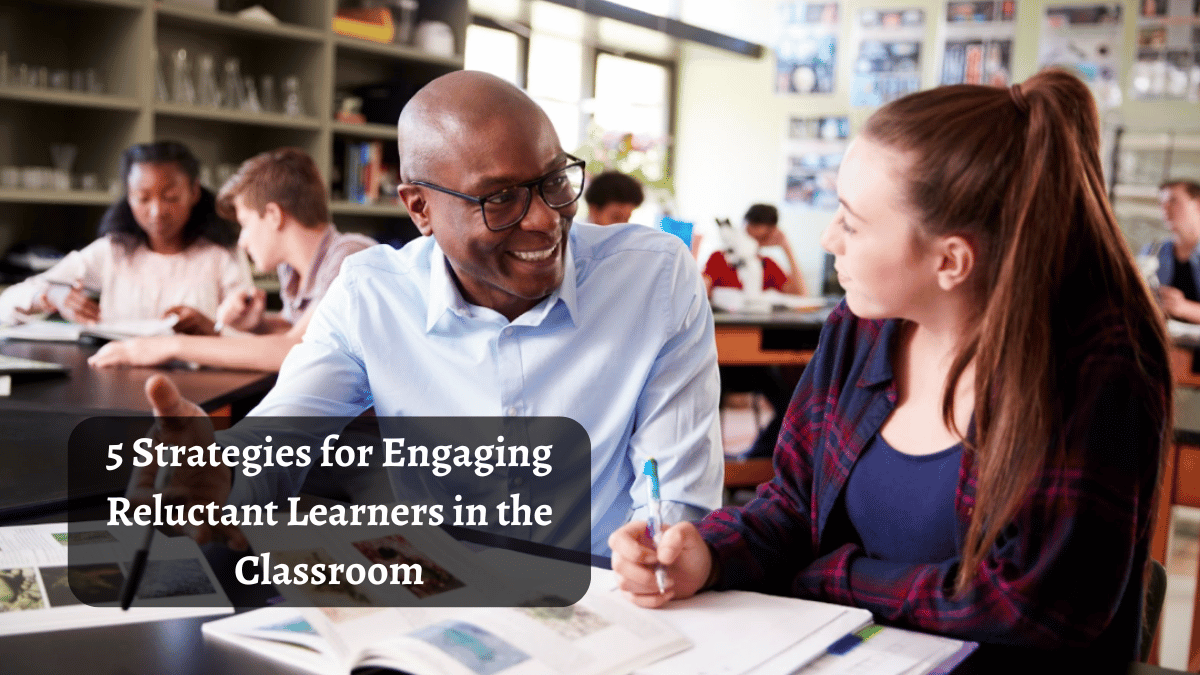With education constantly evolving, teaching today requires staying one step ahead in an arena full of surprises, especially winning over students who aren’t eager to learn. Many students just need to feel it – they come across as uninterested or detached, making teaching them anything a real challenge.
However, with the right strategies and abundant courses like the graduate certificate in educational leadership, teachers can learn to help even the most reluctant learners become actively involved in the classroom. Imagine tapping into a toolbox of engaging techniques; this is precisely what online programs and specific strategies offer – direct paths to light up your students’ enthusiasm.
Regarding reluctant participants in education, instructors have their work cut out for them—finding creative ways to draw these learners out is critical. Below are five effective strategies to help teachers create an engaging, inclusive learning environment that supports all students.
Understanding Reluctant Learners
Understanding who reluctant learners are is essential before exploring the strategies. They’re students who, for several reasons, are disconnected from the academic process. Common characteristics include:
- Motivational Issues: They might show disinterest in schoolwork, which might be because it’s seen to not be appropriate or attached to actual life.
- Poor Self-Esteem: Numerous reluctant learners have repeatedly failed and think they cannot succeed academically.
- Behavioral Issues: Often, disruptive behavior is a symptom instead of a cause; learners might act out because of frustration or other emotional difficulties.
- Poor Relationships with Teachers: A history of negative interactions with educators might make students suspicious of authority figures.
Strategies for Engaging Reluctant Learners in the Classroom
The classroom engagement of reluctant learners calls for empathy, creativity, and flexibility. Some great strategies include:
1. Create a Supportive Learning Environment
A classroom environment that is supportive, nurturing, and inclusive can go a long way in encouraging reluctant learners. Forging strong connections with students hinges on recognizing their efforts openly while guiding them toward improvement. When we carve out spaces in our classrooms for open idea-sharing and embracing errors as part of the process, we’re not just teaching but inviting growth without judgment.
When lessons cater to different ways students learn, everyone gets a fair shot at grasping the subject matter. Adopting inclusivity and celebrating diversity within the classroom will encourage reluctant learners to participate more actively.
2. Bring your Education to Life; Sprinkle Some Technology
Imagine changing dreary lectures into adventures that every learner wants in. That’s what happens when educators infuse classroom instruction with technology — suddenly, every lesson is an invitation no student wants to miss.
Instructors make each class session a memorable adventure by integrating colorful presentations, engaging games that challenge the mind creatively, and helpful learning apps. Teaming up on projects just got a breeze with shared documents and discussion boards; they’re the go-to spots for students wanting to learn together.
3. Apply Real-World Connections
Relating classroom lessons to real-world applications can make learning more meaningful and relevant to reluctant learners. Imagine students rolling up their sleeves and solving actual problems through their projects. That’s project-based learning for you—a way to connect classroom lessons with the outside world, making every lesson count.
When industry pros step into classrooms as guest speakers, it bridges gaps between textbook knowledge and its application, making every lesson click. When we step out for field trips to companies, art galleries, or community centers, it’s all about seeing our studies in action in the big, wide world. Imagine combining math’s precision with science’s curiosity to overcome engineering challenges—that’s cross-curricular learning for you.
4. Promote Student Autonomy and Ownership
Empowering students to take ownership of their learning encourages engagement. Choice in assignment format (essays, presentations, videos) hands control back to the students. It’s empowering—they get to play by their strengths. Handing over the reins to students for debates on their chosen subjects fires up participation and plants the seeds of accountability within them.
Students engaging in self-review can see their progress shine while charting a course for future success. Customizing educational aims around what excites each learner means achievements come with personal pride attached.
5. Use Dynamic Teaching Methods
Traditional teaching methods may only work for some students. For those hard-to-reach students, blending dynamic activities with a spark of creativity can lead to curiosity. Imagine turning classroom concepts into tangible tasks, mixing minds in thought-provoking group discussions, and stepping inside virtual scenarios—this is how active learning invites students on an unforgettable adventure through knowledge.
In the flipped classroom approach, students watch lectures at home and use class time for hands-on problem-solving and discussions. To get those lessons to resonate, stepping out for an internship, lending a hand in volunteer work, or making a difference can be game changers.
Closing Thoughts
Winning over hesitant learners calls for an intelligent mix of strategies. Turning reluctant learners into eager participants starts with promoting a nurturing environment of technological wonders tied directly to real-life scenarios.





